Capturing is a staple mechanic in Monster Hunter games, giving hunters a non-lethal option to defeat their targets. While relatively simple to pick up, capturing has a few unique quirks to learn that may help out players looking for long grinds and rare drops.
In this guide, we’ll cover the differences between capturing and slaying, items needed for capturing, the mechanics of capturing, and then some more advanced details about the capturing system for those who want to take their hunting to the next level.
This guide is written by Karunaguin.
How Capturing Works (When to Capture vs Slay)
Overview
The Capturing System
To capture a monster, players will have to satisfy three conditions:
Hunters will need their target to reach low health before being able to capture it. This benchmark of low health is a different percentage of their maximum health for each monster, though it is most commonly tranquillizing somewhere between 10% and 30%.
Obvious indicators of a monster’s low health include a skull icon floating above near their portrait on the minimap as well as hunters’ Palico repeating the voiceline “It’s looking weak! Almost there!”
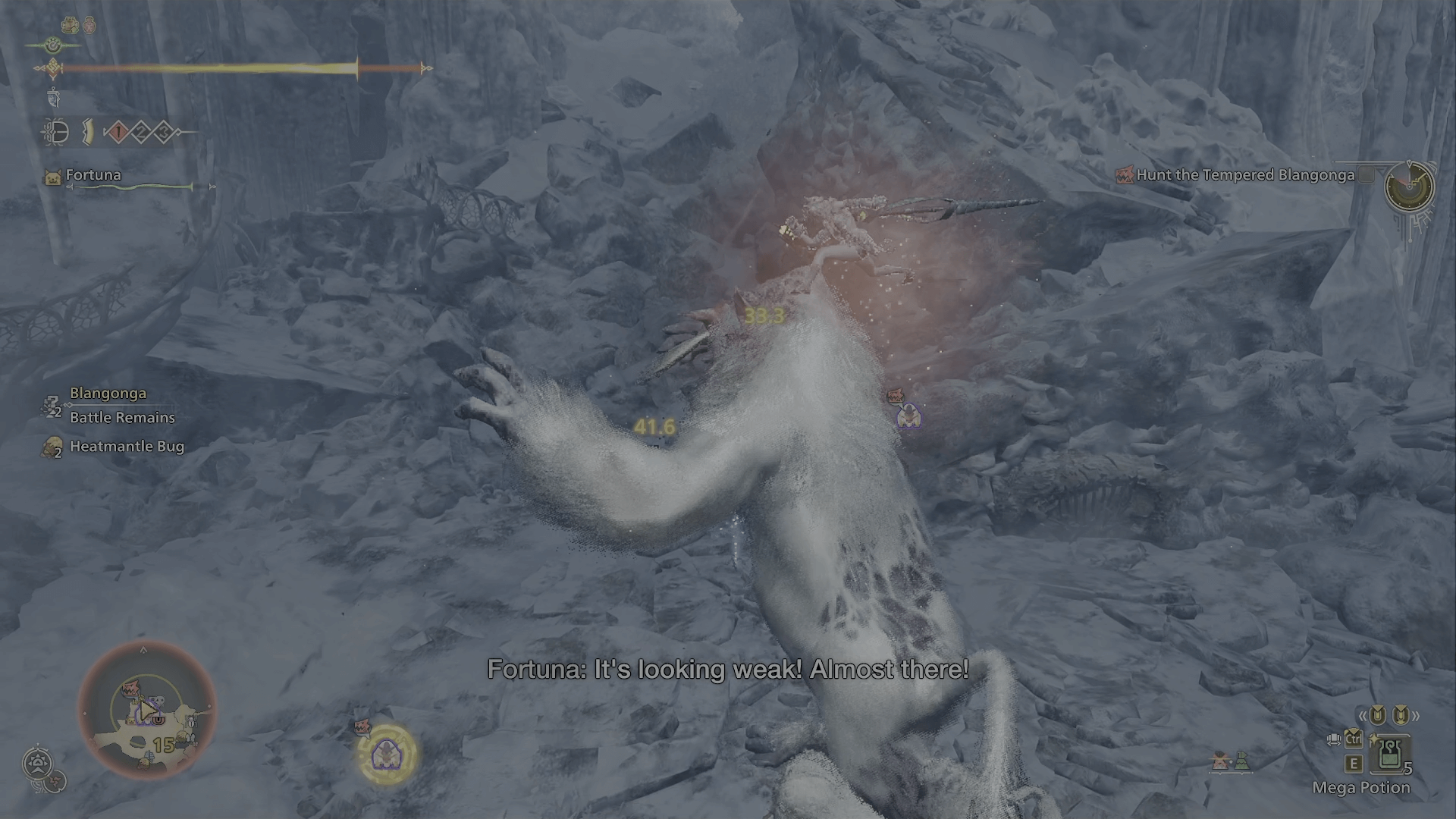
Once the capture target reaches low health, the monster must be trapped and tranquilized to complete the quest. These will only result in a mission clear when both are accomplished at the same time. Inexperienced hunters may face difficulties, such as tranquillizing especially dangerous monsters before they break free from traps.
Trapping a monster is relatively obvious visually. When standing on top of a placed trap, monsters trigger a unique animation as they struggle to break free. Tranquilizing a monster is far less so: there is no visual indicator to show that the monster is affected by the smoke created next to the player when using  Tranq Bomb or the status effects built up by being hit with
Tranq Bomb or the status effects built up by being hit with  Tranq Blade and
Tranq Blade and  Tranq Ammo.
Tranq Ammo.
Typically a monster will only require two hits from any tranq item- be it a  Tranq Bomb used right next to them, or a
Tranq Bomb used right next to them, or a  Tranq Blade that has hit from afar, but hunters are advised to land as many as possible. In contrast, a monster is trapped until a monster is declared as captured.
Tranq Blade that has hit from afar, but hunters are advised to land as many as possible. In contrast, a monster is trapped until a monster is declared as captured.
It is important to note that not every monster is capturable, so it is important to check details of a target or quest beforehand.
What You Need
To capture a monster, you need a trap and something with the tranquilizer quality. For traps, you have the option of the  Shock Trap or the
Shock Trap or the  Pitfall Trap. Notably, the natural equivalents (the Great Thunderbugs and Vine Traps both found in maps) do not work for this. For tranquilizers, you have the option of the default
Pitfall Trap. Notably, the natural equivalents (the Great Thunderbugs and Vine Traps both found in maps) do not work for this. For tranquilizers, you have the option of the default  Tranq Bomb, the
Tranq Bomb, the  Tranq Blade or
Tranq Blade or  Tranq Ammo.
Tranq Ammo.
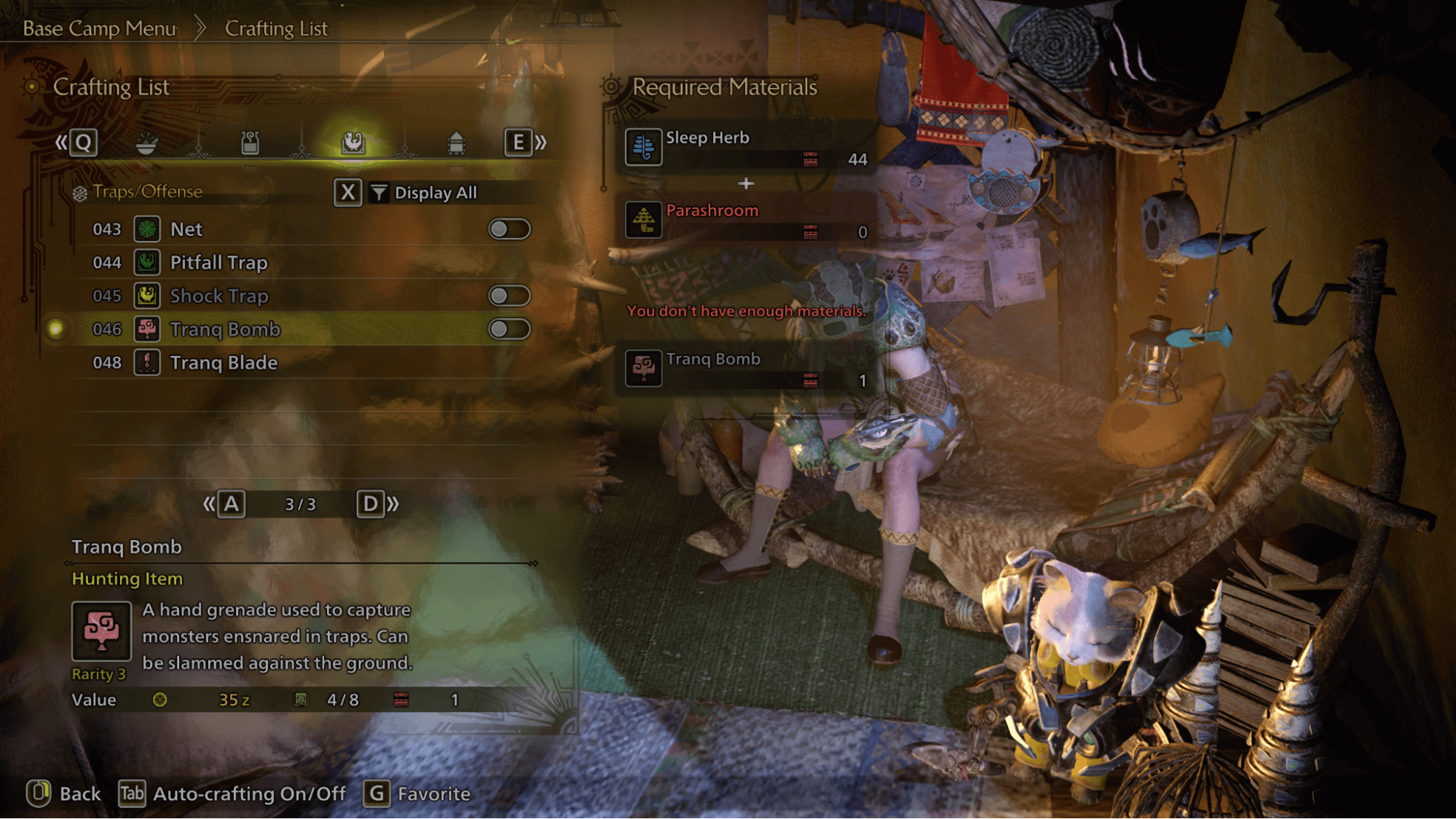
The default  Tranq Bomb is crafted using Sleep herbs and Parashrooms, which can be found around the map or collected using the NPC material retrieval system. The
Tranq Bomb is crafted using Sleep herbs and Parashrooms, which can be found around the map or collected using the NPC material retrieval system. The  Tranq Blade and
Tranq Blade and  Tranq Ammocan then be crafted using a
Tranq Ammocan then be crafted using a  Tranq Bomb and a
Tranq Bomb and a  Throwing Knife or
Throwing Knife or  Normal Ammo respectively.
Normal Ammo respectively.
Hunters are given unlimited uses of  Throwing Knife and
Throwing Knife and  Normal Ammo, so the cost of turning a
Normal Ammo, so the cost of turning a  Tranq Bomb into a ranged equivalent is essentially nothing. Hunters should keep in mind that despite the lack of cost, there is no way to turn
Tranq Bomb into a ranged equivalent is essentially nothing. Hunters should keep in mind that despite the lack of cost, there is no way to turn  Tranq Blade or
Tranq Blade or  Tranq Ammo back into
Tranq Ammo back into  Tranq Bomb, and therefore you should be mindful when crafting!
Tranq Bomb, and therefore you should be mindful when crafting!
Traps can be crafted in many ways. The  Shock Trap can also be obtained through catching Great Thunderbugs with the
Shock Trap can also be obtained through catching Great Thunderbugs with the  Capture Net. When crafting, the key ingredient for both traps is the
Capture Net. When crafting, the key ingredient for both traps is the  Trap Tool. The
Trap Tool. The  Trap Tool is an item that can only be obtained by purchasing it from the provisions stockpile.
Trap Tool is an item that can only be obtained by purchasing it from the provisions stockpile.
For a  Pitfall Trap, you will additionally need a
Pitfall Trap, you will additionally need a  Net, which is in turn crafted using
Net, which is in turn crafted using  Ivy and
Ivy and  Spider Web. Both of these items can also also be found around the map, or by using the material retrieval system. For
Spider Web. Both of these items can also also be found around the map, or by using the material retrieval system. For  Shock Trap, you need a
Shock Trap, you need a  Thunderbug Capacitor, which can be gathered using the material retrieval system, or obtained by hooking Thunderbugs with your slinger or capturing them with your
Thunderbug Capacitor, which can be gathered using the material retrieval system, or obtained by hooking Thunderbugs with your slinger or capturing them with your  Capture Net.
Capture Net.
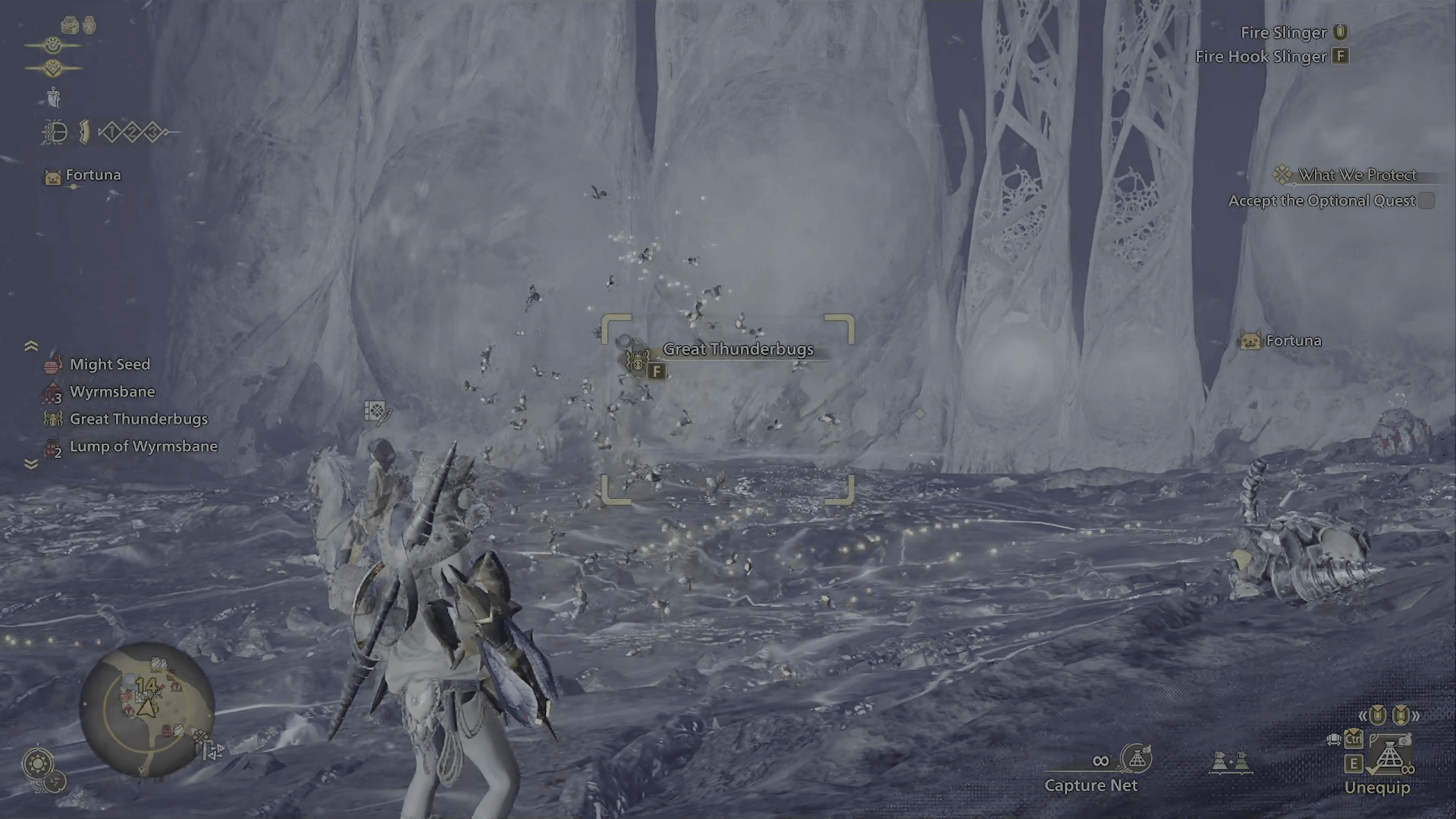
Capturing Versus Slaying
Out of all the differences between capturing and slaying, the most appealing to hunters is likely to be the amount of time you can save. While slaying requires a monster’s health to reach zero, capturing simply requires the monster’s health to be at a lower threshold that varies from monster to monster. The saved time may be insignificant for low level monsters, but in higher level quests and repeated farming capturing’s efficiency can add up quickly.
Another appealing feature of capturing is a different loot table to the carving of monsters. While Monster Hunter Wilds doesn’t explicitly state the drop rates for capturing (and has not been around long enough for players to get a sense of the loot table adjustments) prior games typically decreased the chances of common drops in favor of more rarely dropped items. When farming for a rare gem or pelt, consider investing in a few traps and tranq bombs to raise your chances!
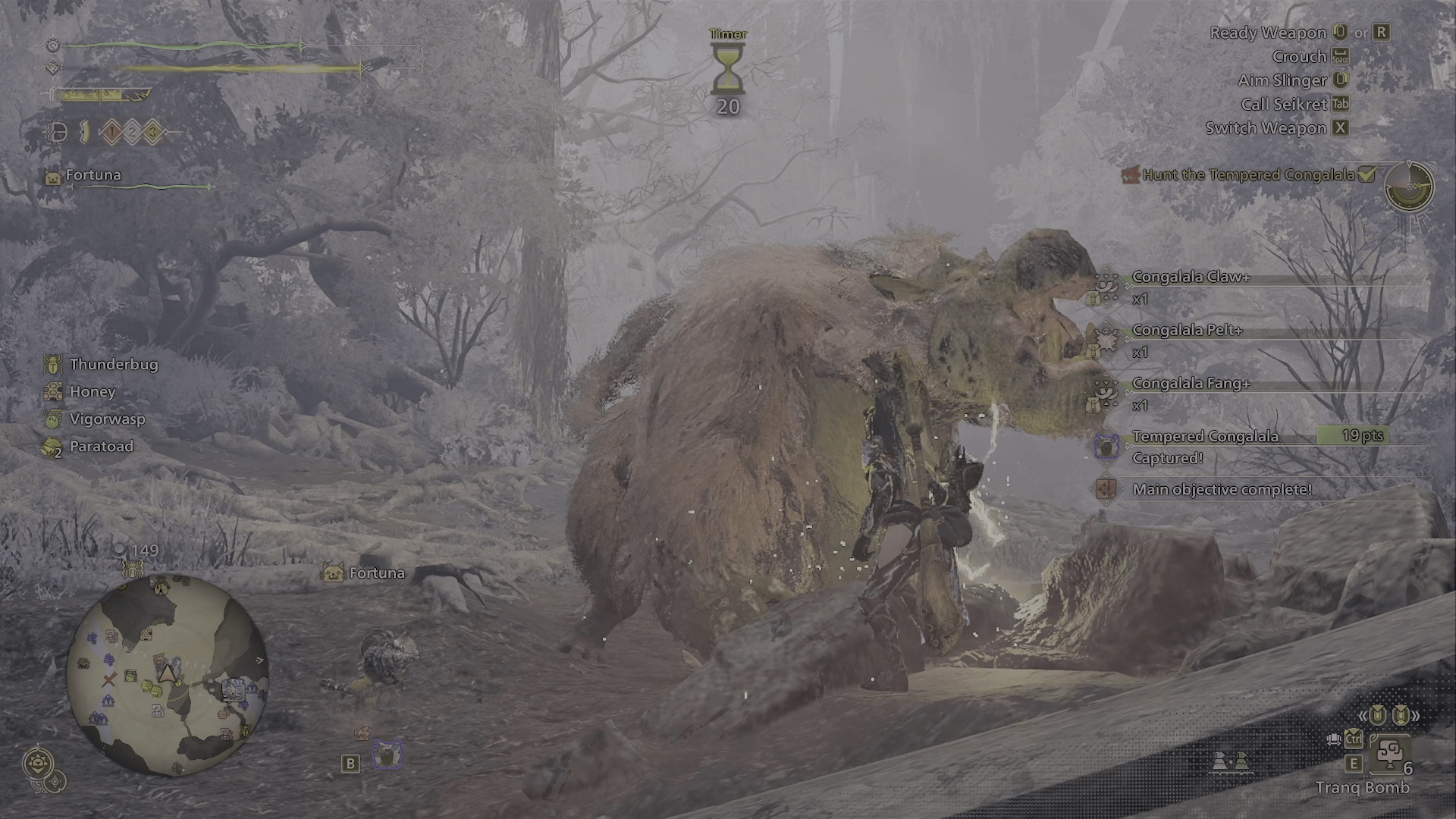
Additional Info
The capturing system has numerous features that are not clearly explained to players, many of which can aid in the quick and consistent capturing of monsters. One such example is resistance to traps.
After being trapped but not captured in a mission, a monster will learn from the attempt and gain resistance to the trap which captured it. The next time this monster is captured by the same trap, they will free themselves far quicker, shortening the window for capturing. For this reason, it is important that hunters carefully consider their use of traps to weaken monsters and try to avoid failed capture attempts.
Another important mechanic to note is tranquilizer status. Hunters may be put off by the lack of visual indicator that a monster is tranquilized, but monsters can indeed be tranquilized in advance before being trapped. Monsters tranquilized ahead of time will be instantly captured without given time to struggle and break free of the trap.
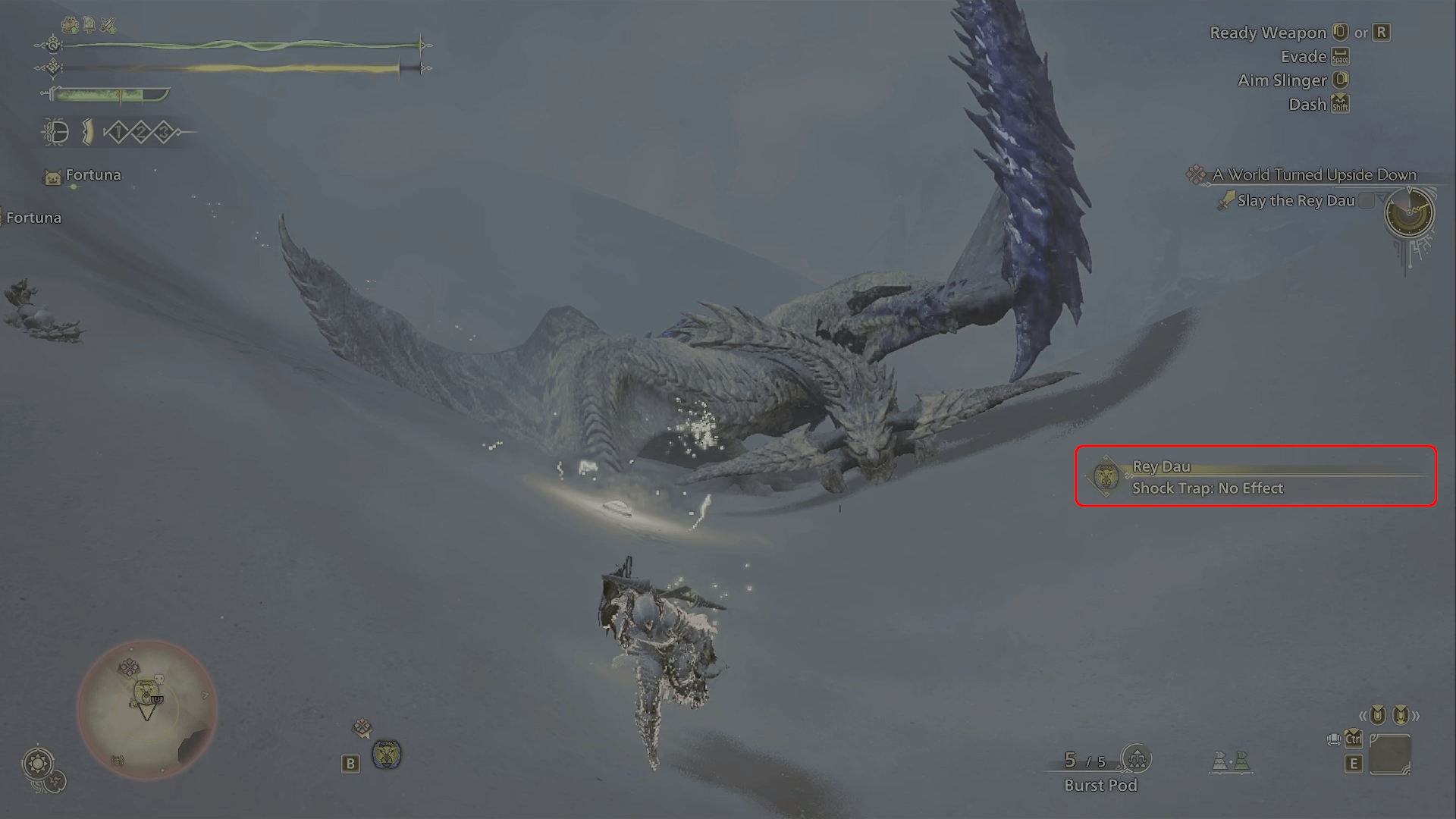
Finally, it is essential to note that not every monster is made equal for every trap. Several monsters feature immunity to certain trap types or can only be affected by specific trap types under certain circumstances, such as when they are enraged.
For specific details on monsters and how effective each trap is on them, check out our Monster Guides section.